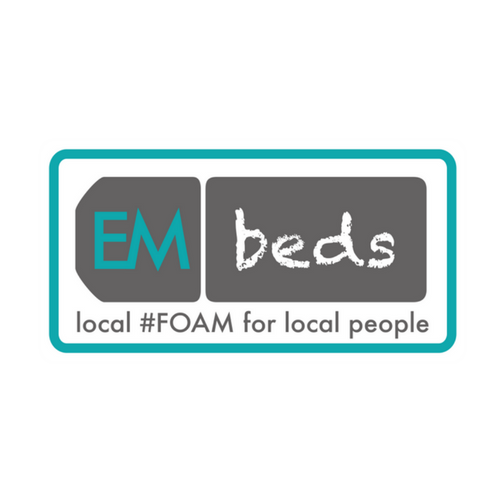Hej Hej Glasgow it was fun, now back to work. Day-4 was full of great Canadian thoughts on neurology (Vertigo, SAH, and TIA) all topped off with a sprinkle of Organophosphates
Vertigo – Guide to the big 3
1. Any features that mandate imaging?
- Neurology deficit
- Significant headache
- Neck pain
- Unable to stand or walk
- Spontaneous vertical nystagmus (i.e. not while doing dix-hallpike)
2. History
- Short episodes <2 min brought on by movement, no spontaneous nystagmus (i.e. only on move)
- BPPV > Dix-Hallpike
- Dizzy for Hours
- Vestibular neuritis vs central > HINTSplus exam (you can only use HINTS if patient is dizzy and has nystagmus)
Horizontal canal BPPV sounds similar to posterior canal (D-H+eply) but tends sever when moves head when upright – tests and how to treat different
Vestibular migraine
One to think about if patient presents without nystagmus – patient should state:
- Recurrent (at least 5 episodes)
- Lasts unto 72hrs
- Has a temporal relationship to migraine symptoms (this may be aura symptoms not headache) at least 50% of the time
Apparently 2.5% population get this, most un/miss-diagnosed, metacloprimide can help
SAH
Ottawa rule out strategy Validation
Something to explore with ED/Med/Rad
1. Inclusion/Exclusion criteria
- Inclusion
- Alert
- > 15 yr of age
- New acute severe non-traumatic headache that reaches maximum intensity within 1 h of onset. Not to be used in patients
- Exclusion
- New neurological deficits
- Previous aneurysms, SAH or brain tumors
- History of similar headaches (≥ 3 episodes over ≥ 6 mo)
- Profound Anaemia
2. Clinical Rule-Out – Patient has NONE of following:
- Symptom of neck pain or stiness
- Age > 40 yr
- Witnessed loss of consciousness
- Onset during exertion
- Thunderclap headache (peak pain instantly)
- Limited neck flexion upon exam
ANY features > CT / NONE > No further investigation required
3. CT Head negative
- SAH excluded if ALL of following :
- CT performed within 6 hours of headache onset
- Experienced radiologist (validation used “General radiologists at 2/6 sites, thin slices (initially 10mm at start of study – what can we provide?)
- NO ‘Ultra-High’ Risk features
Patient doesn’t fit above then need LP.
4. LP results
- LP Positive – perform CTA
- LP negative (RBC <2000×10 6, no Xanthochromia)
- No ‘Ultra-High’ Risks – Excluded
- ‘Ultra-High’ Risks
- Very few RBC – Excluded
- Moderate – if still clinical concern – perform CTA
Validation INFO Presented – Dr Perry
- Studied before and After implementation
- @ 6 centres in canada 2010-2017 (3669 patients)
- Clinical rule out – 100% sensitive
- 6hr rule out CT – 5 misses
- 1 was miss by radiology
- 2 un-ruptured aneurysms, (surgeons stated they were incidental but, one open repair no staining of tissues (so no bleed), one coil preventative)
- 1 Dural vien fistula
- 1 sickle cell with profound anaemia (Hb 63) – known risk within radiology so profound anaemia included in exclusion
- How testing changed with implimentation
- CT rate not changed
- LP’s fell from 38-25%
- Mean length of stay 6.4hr unchanged (however, ED responsible for LP so withTime in ED would be shorter)
- Prev studies canada & japan
TIA
Vast majority of complications post TIA (i.e. strokes) happen within 7 days (50% within 2days) so time matters
Risk score
- ABCD2 – has the most evidence but only has a sensitivity of 31%
- Canadian risk score – much more complex , but much better characteristics – validation just finishing
Prevention
- Early specialist and carotid imaging vital (Carotid endarterectomy NNT= 3 if done in first 2weeks)
- Anti-platelet therapy – evidence from CHANCE and POINT trials indicating 21days dual anti-platelet therapy best (then going back to 1)
- TIA with AF – need anticoagulation if possible NOAC’s prob best and would be easiest for us in ED
Organophosphate (nerve agents)
- Used several times recently.
- Decontamination vital – In the Sarin attack (japan), poor decor 20-30% of staff treating the patients @ hospital developed symptoms
- Sign & Symptoms
- Miosis/Lacrimation
- Local Fasciculations
- Sweating/Hypersalivation
- Bronchoconstriction (wheezy) > Resp failure/arrest
- Fits/coma
- Blood and skin tests available – do we have any?
- Therapy
- Atropine: 2mg im/iv, if not improved double (i.e. 4mg >8mg>16mg>32mg)
- looking to have clear chest dry armpits, HR and sBP at about 80
- Oximes: several available (We get Pralidoxime from LGI see rare antidotes)
- Can help reverse AChe blockage
- Earlier the better and may take a long time
- Atropine: 2mg im/iv, if not improved double (i.e. 4mg >8mg>16mg>32mg)
- Types of Agent
- G agents – volatile evaporate quick, onset fast offset fast
- V agents – stable, onset slower, off set slow
- OP agents (pestersides) – v slow
